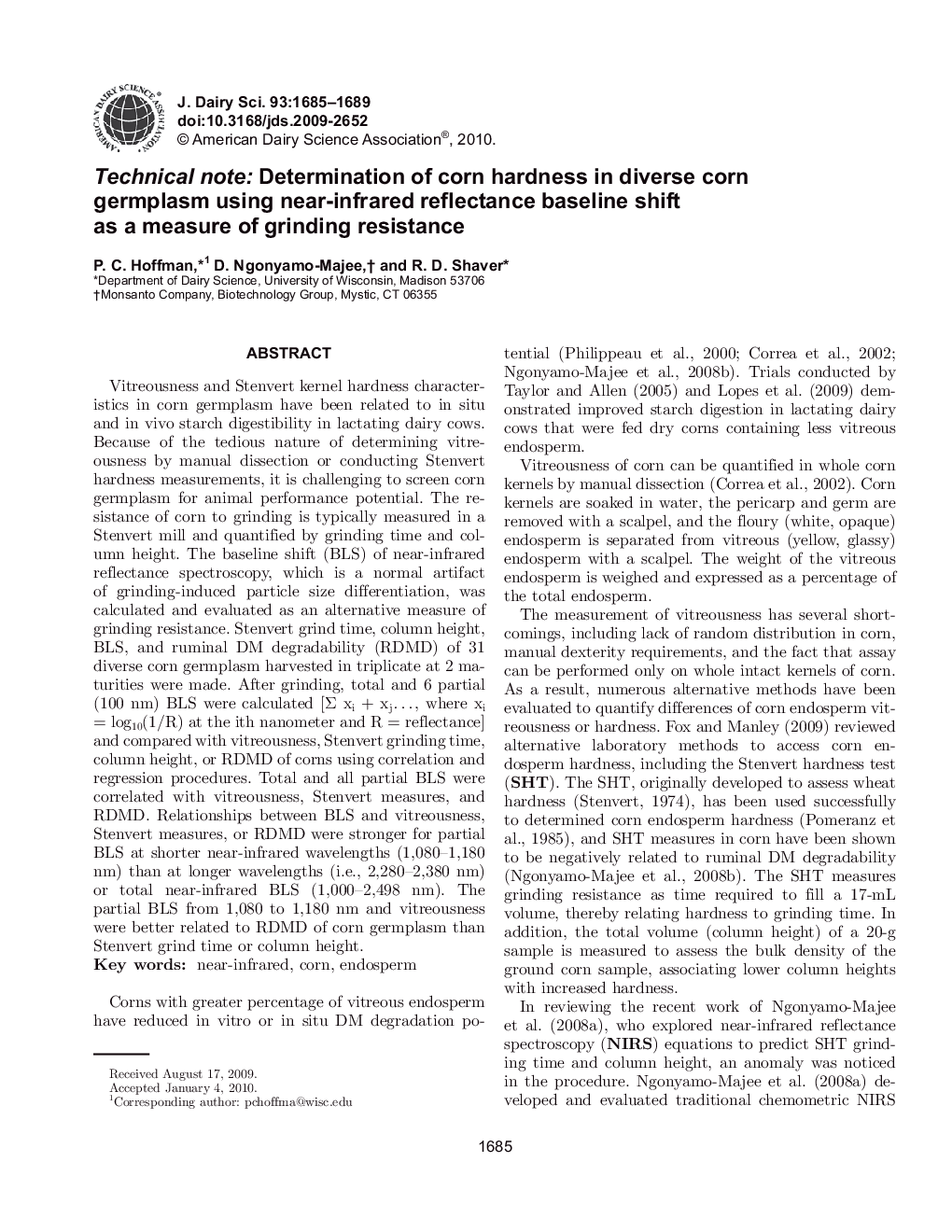| Article ID | Journal | Published Year | Pages | File Type |
|---|---|---|---|---|
| 10982472 | Journal of Dairy Science | 2010 | 5 Pages |
Abstract
Vitreousness and Stenvert kernel hardness characteristics in corn germplasm have been related to in situ and in vivo starch digestibility in lactating dairy cows. Because of the tedious nature of determining vitreousness by manual dissection or conducting Stenvert hardness measurements, it is challenging to screen corn germplasm for animal performance potential. The resistance of corn to grinding is typically measured in a Stenvert mill and quantified by grinding time and column height. The baseline shift (BLS) of near-infrared reflectance spectroscopy, which is a normal artifact of grinding-induced particle size differentiation, was calculated and evaluated as an alternative measure of grinding resistance. Stenvert grind time, column height, BLS, and ruminal DM degradability (RDMD) of 31 diverse corn germplasm harvested in triplicate at 2 maturities were made. After grinding, total and 6 partial (100 nm) BLS were calculated [Σ xi + xjâ¦, where xi = log10(1/R) at the ith nanometer and R = reflectance] and compared with vitreousness, Stenvert grinding time, column height, or RDMD of corns using correlation and regression procedures. Total and all partial BLS were correlated with vitreousness, Stenvert measures, and RDMD. Relationships between BLS and vitreousness, Stenvert measures, or RDMD were stronger for partial BLS at shorter near-infrared wavelengths (1,080-1,180 nm) than at longer wavelengths (i.e., 2,280-2,380 nm) or total near-infrared BLS (1,000-2,498 nm). The partial BLS from 1,080 to 1,180 nm and vitreousness were better related to RDMD of corn germplasm than Stenvert grind time or column height.
Keywords
Related Topics
Life Sciences
Agricultural and Biological Sciences
Animal Science and Zoology
Authors
P.C. Hoffman, D. Ngonyamo-Majee, R.D. Shaver,
